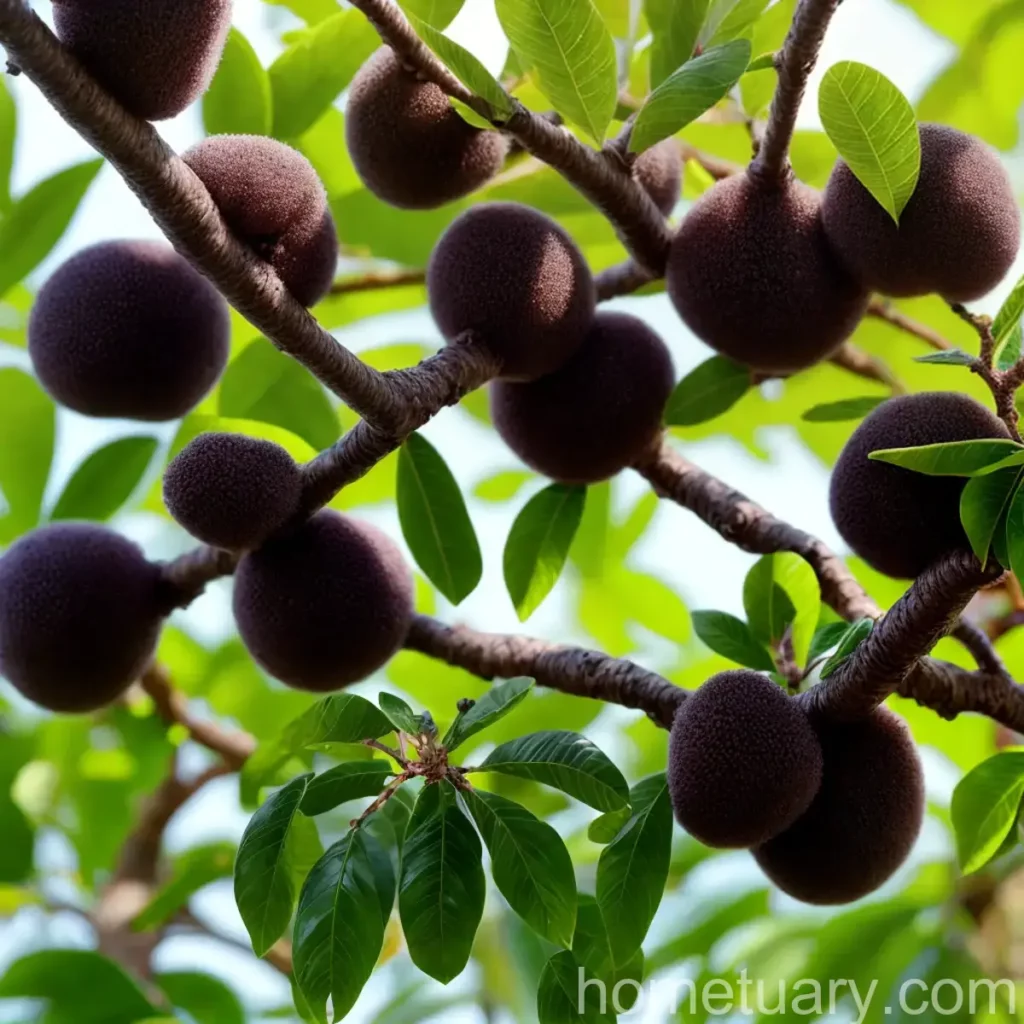The Fascinating World of Jaboticaba Tree (Plinia cauliflora)
Plinia cauliflora, commonly known as Jaboticaba, is a unique and fascinating fruit tree native to Brazil. Its distinctive growth habit, delicious grape-like fruits, and cultural significance make it an intriguing subject for plant enthusiasts and horticulturists alike. In this comprehensive guide, we will delve into the various aspects of the Jaboticaba tree, including its cultivation, uses, maintenance, and much more.
What is Jaboticaba (Plinia cauliflora)?
The Jaboticaba tree, scientifically known as Plinia cauliflora, is a tropical fruit tree belonging to the Myrtaceae family. This species is highly valued for its grape-like fruits that grow directly on the trunk and branches, giving it a highly unconventional appearance. The unique characteristic of bearing fruits on the bark makes Jaboticaba a notable and visually striking addition to any garden or landscape.
Key Takeaways
Jaboticaba Tree:
- Jaboticaba Tree Varieties: There are several varieties of Jaboticaba, each with distinct characteristics and fruit qualities.
- Jaboticaba Tree Uses: Apart from its edible fruits, Jaboticaba tree is used in landscaping, home gardens, and sustainable farming.
- Jaboticaba Tree Maintenance: Regular pruning and proper care are essential for maintaining the health and productivity of Jaboticaba trees.
- Jaboticaba Tree Cultural Significance: Jaboticaba plays a significant role in folklore, mythology, and traditional uses.
Culture
Water
Jaboticaba trees should be watered regularly, especially during dry spells or when grown in containers. However, it is crucial to ensure proper drainage to prevent waterlogging, which can be detrimental to the tree’s health.
Sunlight
These trees thrive in full sun to partial shade. Adequate sunlight is essential for promoting flowering and fruiting in Jaboticaba trees.
Fertilizer
Applying a balanced fertilizer with a higher potassium content can benefit Jaboticaba trees. Fertilizing should be done sparingly, and it is advisable to use organic or slow-release fertilizers for sustainable growth.
Soil
Jaboticaba trees prefer slightly acidic and well-draining soil. A mix of loamy soil enriched with organic matter is conducive to their growth.
Uses
Culinary Uses
The Jaboticaba fruits are enjoyed fresh or used in the preparation of jellies, jams, wines, and liqueurs. These versatile fruits add a unique flavor to various culinary creations.
Landscaping
With its ornamental value and unusual appearance, Jaboticaba trees are favored for landscaping in tropical and subtropical regions. Their ability to bear fruits on the trunk and branches makes them a distinctive addition to gardens and green spaces.
Medicinal Uses
Jaboticaba fruits are rich in antioxidants and are believed to offer various health benefits. They are used in traditional medicine for their reported antioxidant, anti-inflammatory, and anti-cancer properties.
Pruning
Proper pruning is essential for maintaining the shape and health of Jaboticaba trees. Pruning should be done after the fruiting season to avoid interfering with the next season’s fruit production.
Propagation
Jaboticaba trees can be propagated through seeds or cuttings. However, air layering is the most common and effective method for propagating Jaboticaba trees.
Container Popularity
Due to its compact size and ornamental value, Jaboticaba trees are popular choices for container gardening, allowing enthusiasts to grow this unique fruit tree in urban and suburban settings.
Common Diseases
Jaboticaba trees are susceptible to certain fungal diseases, including anthracnose and powdery mildew, especially in humid conditions. Providing adequate air circulation and proper sanitation practices can help prevent these diseases.
Disease Diagnosis
If your Jaboticaba tree exhibits symptoms such as leaf spots, powdery coatings, or fruit lesions, it may indicate the presence of fungal diseases. Prompt diagnosis and treatment with appropriate fungicides is crucial to prevent the spread of these diseases.
Common Pests
Jaboticaba trees are prone to infestations by common garden pests such as aphids, scales, and caterpillars. Regular monitoring and the application of horticultural oils or insecticidal soaps can help control these pests effectively.
Botanist’s Tips
- Weather Consideration: Plant Jaboticaba trees in areas with protection from strong winds, especially during the early stages of growth.
- Pollination: Although Jaboticaba is self-fertile, cross-pollination may enhance fruit production and quality.
- Harvesting: Gently twist the fruits to harvest them when they are fully ripe, ensuring minimal damage to the tree and fruits.
Fun Facts
- The fruits of Jaboticaba can be used to make an exquisite Brazilian wine known as “Jabuticaba Wine.”
- In Brazil, Jaboticaba is a popular fruit for eating fresh or making sweets, jams, and desserts. It is often found in local markets and used in traditional recipes.
- The bark of Jaboticaba trees is used in traditional medicine for its astringent and anti-inflammatory properties.
Links to External Resources
For additional information on Jaboticaba (Plinia cauliflora), feel free to explore the following resources:
- The Jaboticaba: A Brazilian Grape Tree with Many Benefits
- Cultivation and Care of Jaboticaba Trees
- Jaboticaba Tree Varieties and Uses
- Jaboticaba Tree Pruning Techniques
- Traditional and Medicinal Uses of Jaboticaba
Conclusion
The Jaboticaba tree, with its captivating growth habit and delectable fruits, serves as a valuable addition to gardens, landscapes, and urban green spaces. Its rich cultural significance, ornamental appeal, and culinary versatility make it a desirable species for horticultural enthusiasts and individuals interested in sustainable and exotic fruit production. By understanding its cultivation, maintenance, uses, and significance, we can fully appreciate the charm and potential of the remarkable Jaboticaba tree. Whether you are captivated by its folklore, intrigued by its culinary uses, or fascinated by its growth habit, the Jaboticaba tree offers a delightful journey into the world of tropical fruit trees and the rich diversity of plant life.
As we conclude our exploration of the captivating Jaboticaba tree, we hope this guide has provided valuable insights and inspiration for incorporating this extraordinary species into your gardening endeavors, culinary pursuits, and appreciation of unique and culturally significant fruit trees.
Disclaimer: The information provided in this article is for educational and informational purposes only. It is important to conduct thorough research and seek advice from horticultural experts before cultivating and caring for Jaboticaba trees. Additionally, when using plants for medicinal purposes, consultation with healthcare professionals is recommended.















